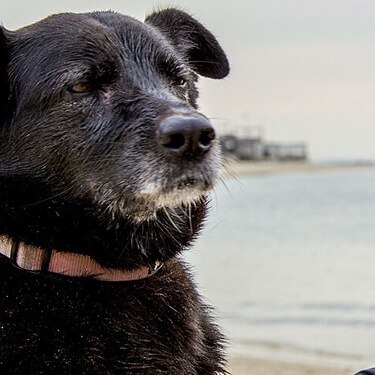About
The United Kennel Club recognises two sizes: miniature and standard. Miniature here indicates males 12 inches up to and including 15 inches, and females 11 inches up to and including 14 inches. Standard size indicates males over 15 to 19 inches and females over 14 to 18 inches. The American Kennel Club recognises three sizes: toy, miniature, and standard. Toy is from 9 inches to 12 inches; miniature from 12 inches to 15 inches, and standard from 15 to 19 inches.The Eskie is a Nordic or northern breed, with a thick white or buff double coat. They have erect triangular shaped ears, a wedge shaped head and a tail that curls over the back. The coat is thick but not wavy.|
Personality
The American Eskimo is a family dog. Eskies are very loyal and need to be around their owners. They are highly intelligent, but can be stubborn. They make good watchdogs, but are prone to excessive barking. They must be socialised with people or they can become overly wary of strangers. With proper socialisation along with a proper introduction, Eskies warm up to strangers and accept them good-naturedly.An Eskie only needs a moderate amount of exercise, but needs plenty of things to do, or they will find something to do. Like all intelligent dogs, they can become bored and may dig or chew in an effort to entertain themselves. These dogs are smart and capable of Houdini-like escapes if not properly confined.
What to Expect
American Eskimos dogs need to interact with their owners. They tolerate other dogs and household cats well, if raised with them. As with most breeds, especially Nordic breeds, other pets, such as rodents, birds and reptiles, should be kept away from the Eskie. Eskies make excellent watchdogs and are suspicious of strangers, but their size does not make for a good deterrent. Some Eskies can bark excessively if not properly trained.The Eskie has a thick coat to withstand harsh winters. But because they prefer to be with their family they should not be made an exclusively outside dog.Eskies are ideal for people who want a small to medium-sized active dog that does not require a large garden and can be content with walks and games of fetch. Eskies do not do well left alone for long periods. An Eskie typically lives from 10 to 15 years.
History
The American Eskimo dog, or "Eskie" as the fans of this cheerful, enigmatic dog fondly call them, has a long and ancient history. Although relatively recent to the American Kennel Club, these dogs appeared in the United States in the 19th century. They were often found with German immigrants and were probably descendants of the German spitz, the white Pomeranian, the white Italian spitz, and the white keeshond. These dogs quickly became known as the American spitz.In the late 19th century and into the early 20th century, these dogs were popular in circuses and other forms of entertainment doing tricks. The beautiful coat, alert expression, and trainability made these dogs crowd-pleasers. These performing dogs increased the breed's popularity as family after family fell in love with them at the circus. Early pedigrees often boasted the particular tricks that each dog in them could perform, and by 1913 the United Kennel Club recognised the breed. The National American Eskimo Dog Association established the official standard of the American Eskimo dog with the United Kennel Club in 1970. In 1985, the American Eskimo Dog Club of America formed to make the Eskie an American Kennel Club breed, and the breed achieved full recognition there in 1995.The Eskie is as beautiful and smart as it was in the early 20th century. They make a delightful companion for anyone wanting a sensitive and intelligent dog.
Adopt a pet. Change a life.
Are you prepared to adopt a pet? Use these tools to make sure you are ready for the commitment.
Adopt a pet. Change a life.
Are you prepared to adopt a pet? Use these tools to make sure you are ready for the commitment.






















